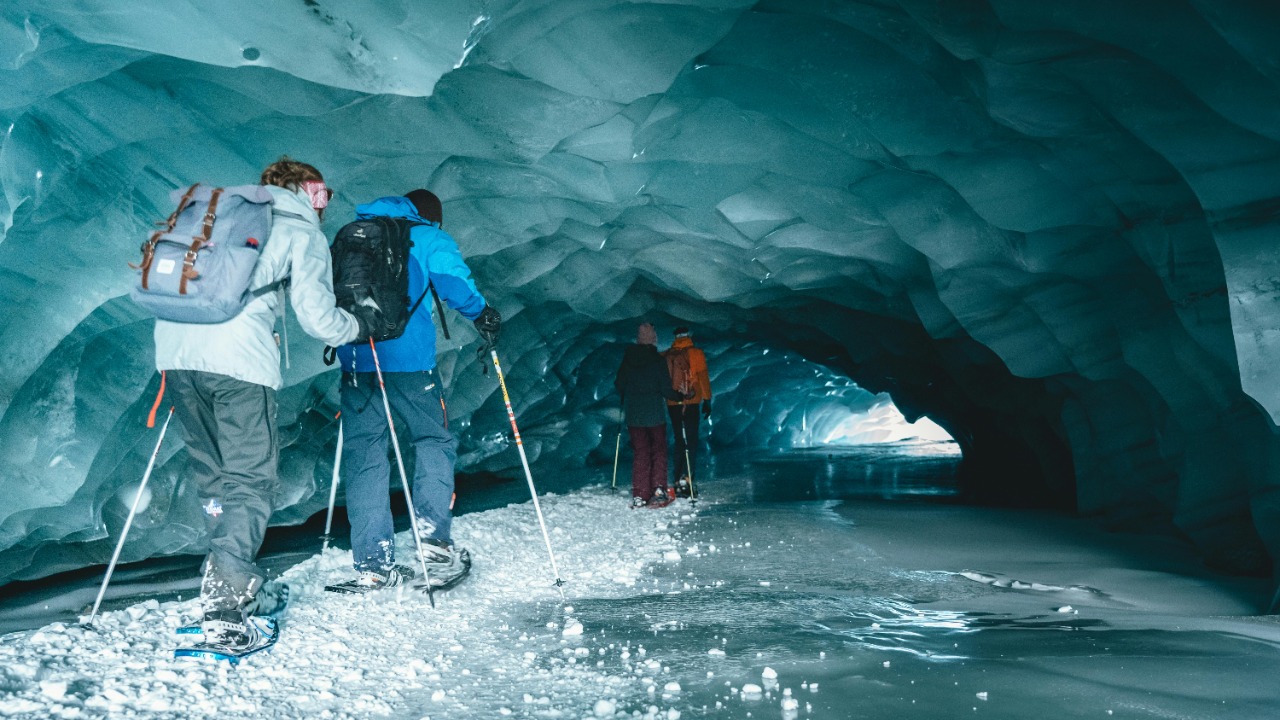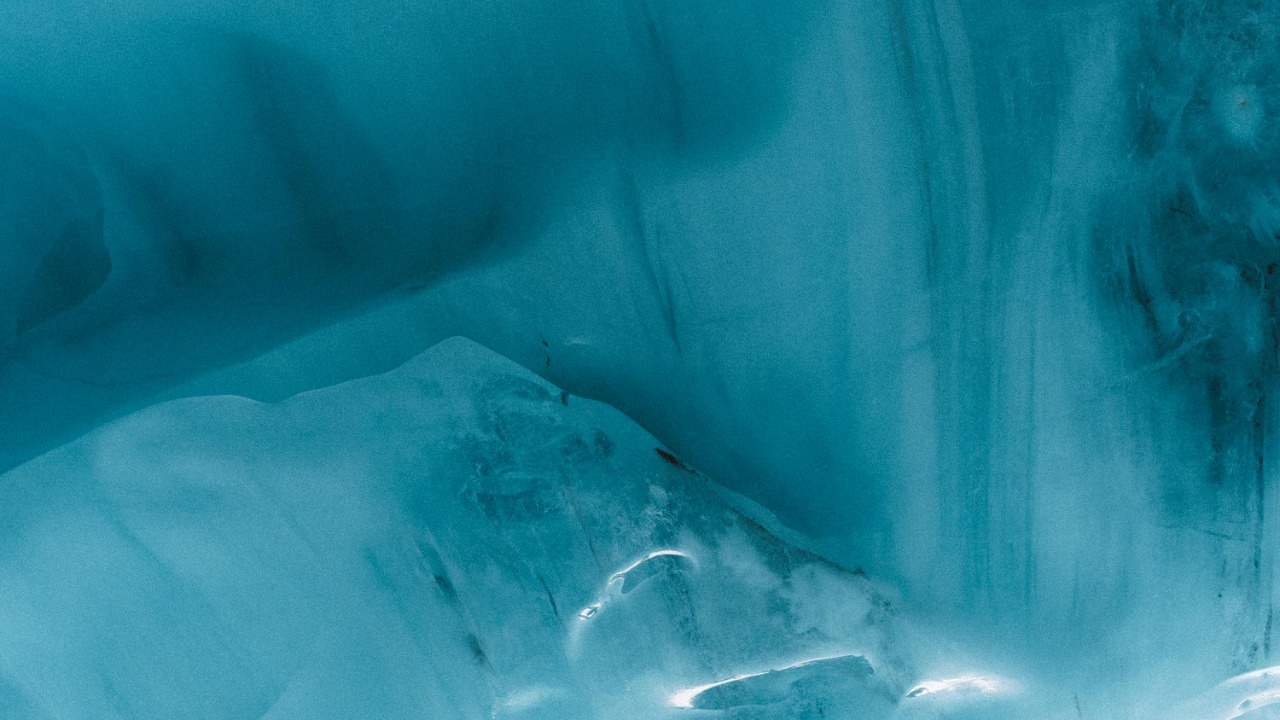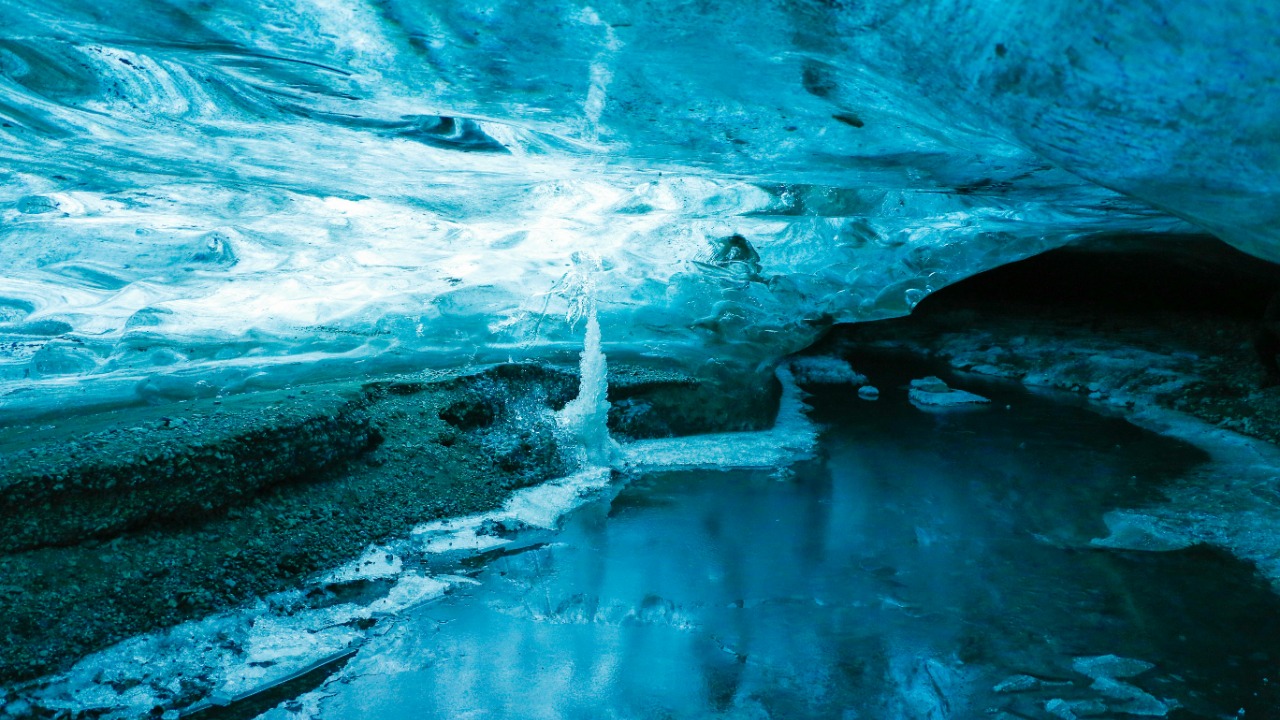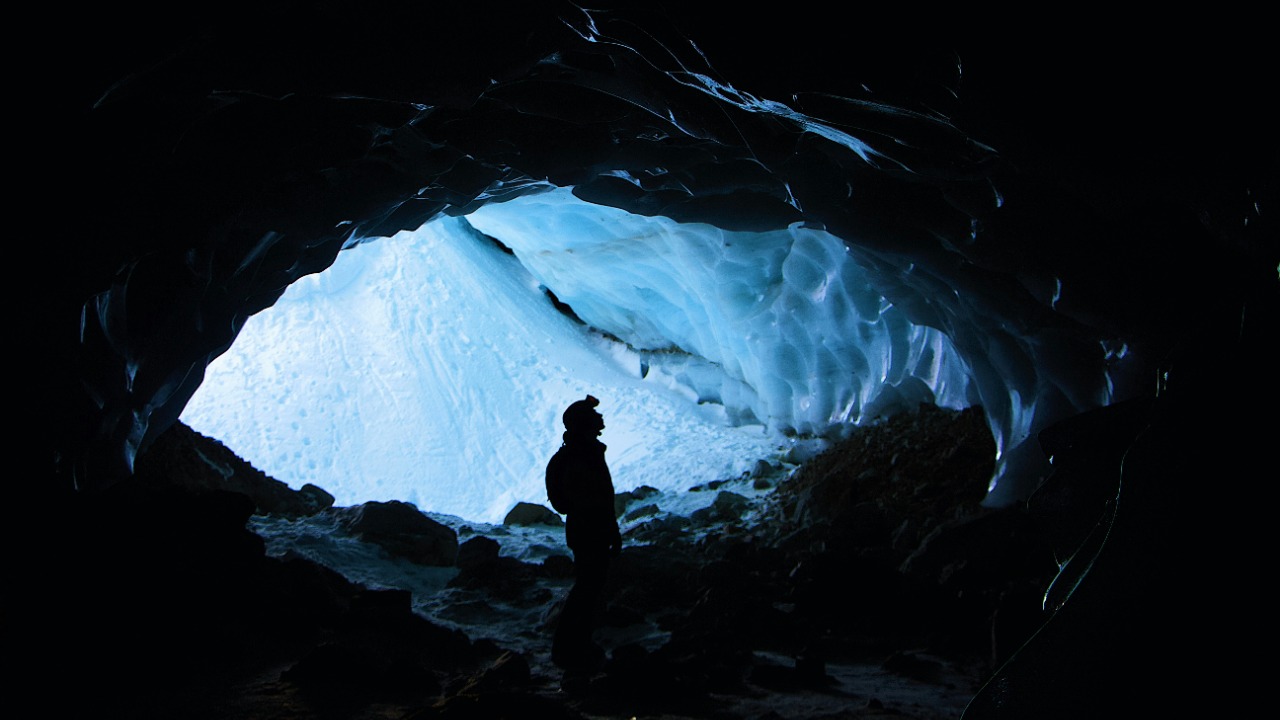
Nestled within the vast icy expanse of Alaska lies a breathtaking wonder—a cave ensconced inside a giant glacier. This natural marvel, both a testament to nature’s artistry and a symbol of the planet’s ever-changing climate, offers an unparalleled glimpse into the hidden beauty of the frozen wilderness. Join us as we explore the mystery, allure, and significance of this unique geological formation.
The Enchanting World of Glacial Caves

Glacial caves are a fascinating result of intricate geological processes. These formations occur when meltwater from the surface of a glacier seeps down through crevasses and hollows out chambers within the ice. Over time, this water erodes the glacier from within, creating stunningly intricate passageways and chambers. Unlike limestone caves formed by acidic water dissolving rock, glacial caves boast smooth, polished surfaces and are transient by nature. The constantly shifting ice gives each cave a unique structure, making them stand out from other subterranean formations.
Climate change plays a pivotal role in the evolution and preservation of glacial caves. As global temperatures rise, the increased rate of glacial melt accelerates the formation of these caves. However, this same process threatens their longevity. The faster a glacier melts, the more unstable and short-lived its caves become. Consequently, the ecological balance of these icy realms and their surrounding environments is disrupted, causing cascading effects on the local flora and fauna. Efforts to study these changes are crucial for understanding the broader implications of climate change on glacial ecosystems.
Exploring the Ice Cave: A Journey into the Blue Depths

Stepping inside a glacial cave is like entering a surreal, otherworldly environment. The most striking feature is the mesmerizing blue hue of the ice walls, a color that results from the dense ice absorbing all other colors of the light spectrum. This vibrant shade of blue is a visual feast, captivating visitors as they traverse the winding corridors. The ice formations, ranging from translucent icicles to massive frozen waves, create an ever-changing landscape that is both awe-inspiring and ephemeral.
Beyond the visual spectacle, the acoustics inside a glacial cave offer a unique auditory experience. The thick ice walls dampen external sounds, enveloping visitors in a hushed, almost spiritual silence. Occasionally, the cave will echo with the distant crackle of shifting ice, a reminder of the living nature of the glacier. Exploring these chambers requires caution and respect for the inherent dangers. Guided tours are highly recommended to ensure safety, as experienced guides are well-versed in navigating the often-treacherous terrain and can provide valuable insights into the cave’s natural history and geology.
The Ecological Significance of Glacial Caves

Despite their harsh environments, glacial caves host a surprising diversity of life. Microorganisms, some of which are unique to these icy habitats, thrive in the nutrient-rich waters within the caves. These tiny life forms play an essential role in the broader glacial ecosystem, contributing to nutrient cycling and supporting larger organisms. The presence of such biodiversity in these extreme conditions offers a glimpse into the adaptability of life and has important implications for understanding the potential for life in other cold environments, both on Earth and beyond.
Scientific research and conservation efforts are crucial for preserving these fragile ecosystems. Ongoing studies aim to unravel the complexities of glacial caves and their ecological roles. Researchers are also focused on understanding the impact of climate change on these environments, providing vital data to inform conservation strategies. Protecting glacial caves from human-induced threats, such as pollution and unsustainable tourism, ensures that these natural wonders remain a part of the planet’s ecological tapestry for future generations.
A Spectacular Tourist Attraction

Glacial caves in Alaska have become a must-see destination for adventurous travelers seeking unique experiences. Visitors often share anecdotes of their once-in-a-lifetime journeys into these icy depths, describing the sense of wonder and discovery that accompanies each visit. Seasonal variations add an extra layer of intrigue, as the caves’ structures and colors shift with the changing climate. The best times to visit are during the late fall and early winter months when the caves are most stable and accessible.
The influx of tourism has had a positive impact on local communities, providing economic opportunities and fostering cultural exchange. However, managing this influx presents challenges, including the need to balance economic benefits with the preservation of natural resources. Local businesses and government agencies are working together to implement sustainable tourism practices that protect the integrity of these sites while supporting community growth. By promoting responsible tourism, visitors can enjoy the wonders of glacial caves while ensuring their preservation for future generations.
Capturing the Imagination: Glacial Caves in Media and Culture

Glacial caves have long captured the imagination of artists, writers, and filmmakers. Their ethereal beauty and otherworldly qualities make them a popular subject in various media. Films often depict these caves as mystical realms, while literature explores their symbolic meanings, such as the passage of time and the fragility of nature. These cultural representations not only entertain but also inspire appreciation and awareness of the natural world.
Educational programs and documentaries play a significant role in bringing the wonders of glacial caves to a broader audience. Documentaries like those featured on Dailymotion offer in-depth insights into the science and beauty of these formations, while educational initiatives aim to raise awareness about the importance of preserving our planet’s natural wonders. By highlighting the unique characteristics of glacial caves, media and culture contribute to a greater understanding and appreciation of these remarkable geological features.